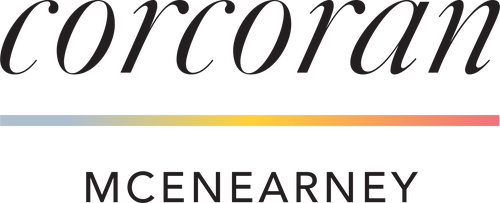Valentine’s Day may have come and gone but keeping your heart a’flutter with a healthy home is something we can love at any time of year.
We all know what contributes to a healthy lifestyle – eating a balanced diet, getting enough sleep, regular exercise, eliminating or reducing alcohol and tobacco. What we may need a brush-up on are the ways we can help ourselves by keeping our home on the wellness track too. A Healthy Home definitely equals a Healthier You in ways you might not have expected.
As we head into the “Spring Cleaning Season” it’s the perfect time to make sure your healthy choices are paying off in your home as well. Keeping up with these few routine tasks will go a long way in protecting both your home and your health.
The Kitchen – This area is often called “The Heart of the Home” so it’s a great place to start your Home Health Assessment.
- Ensure all appliances are safely installed and that there are no leaks or faulty gas, water or electrical hook-ups.
- Gas appliances have been in the news over reports that dangerous chemicals and emissions – specifically methane and nitrogen dioxide, a pollutant linked to childhood asthma and other respiratory problems – are affecting consumers inside their homes. If you use a gas stove ensure you have proper ventilation either with nearby windows or an effective vent hood.
- Volatile Organic Compounds (VOCs) are gas emissions from products like cleaning supplies, paint, furnishings and carpets and long-term exposure can cause respiratory and other health issues. If you can’t avoid purchasing items with harmful chemicals or ingredients, reduce your risk by purchasing items with the smallest packaging available to reduce leftover supplies that can accumulate fumes.
- Water and overcleaning can corrode gas lines so ensure connections are clear and call in utility experts to check if you suspect leaks. Washington Gas Emergency number is 800-752-7520 and homeowners can call 811/Miss Utility if they need to do any work around known or suspected utility lines.
- Keep those dishtowels and sponges clean! These – and your sink drain – are probably the items that get the most cross-contamination in the home and scientists have found 360+ species of bacteria that can survive in a kitchen sponge.
The Living Spaces – These are the places where we gather with our families, our friends, our pets… and all that they bring with them! A few places to keep at the top of your checklist for routine maintenance.
- Filters, filters, filters. Keep the air you breathe in your home free of pollutants, pet dander and allergens by changing your HVAC filters at least once a season and invest in additional filters to combat other irritants and limit spread of germs and viruses.
- Carbon Monoxide can be emitted from gas appliances like stoves and water heaters and accumulation of the gas indoors can be deadly to humans and animals. It is colorless and odorless and can incapacitate residents before they realize they’ve been affected. Carbon Monoxide detectors cost about $20-$30 each, are recommended on each floor of a house including the basement and garage, and should be within 10 feet of any bedroom.
- Keep indoor humidity levels between 30-50%, the range that the EPA considers best. Humidity levels that are too low can cause breathing and sinus issues and dry skin, while high humidity can concentrate allergens and exacerbate mold and mildew growth and lead to respiratory issues. Abnormal humidity can also stress furniture, building materials and structural supports, especially those made of wood.
- Warning: this report on what’s lurking in your old mattress might cause nightmares. Save yourself sleepless nights and make sure you’re using proper mattress hygiene.
- Lead-based paint was a common feature of homes built prior to 1978 and it’s not uncommon to find remnants of this paint in windowsills and doorways in older homes. If ingested it can cause a multitude of health problems, especially for children, so it’s important to ensure safe encapsulation (such as by painting over it) or proper removal from the home. This Old House has a quick tutorial on the process with one of their experts.
- Bring in greenery like plants or window gardens for up-close-and-personal air scrubbing.
The Bathroom – A lot can happen in a little space, especially one that gets so much use.
- Bathrooms are humidity havens which means keeping mold, mildew and biofilm at bay with proper ventilation and regular cleaning.
- Clean your showerhead regularly. The Water Quality and Health Council reports that one of the most commonly found bacteria in U.S showerheads are called nontuberculosis mycobacteria or NTM. They are naturally occurring and can be found in soil, dust, and water, including lakes and streams and they also excel at growing in household plumbing.”
The Basement – The lower level of your home accumulates a lot more than storage items and may need a bit more attention and investigation to things unseen.
- Radon is a naturally occurring radioactive gas found in the soil and is the number one cause of lung cancer among non-smokers, according to EPA estimates. Overall, radon is the second leading cause of lung cancer and the gas makes its way into homes through porous foundations, walls, pipes and well water. It is found in our DC-Metro region and it’s not uncommon to see radon abatement equipment on the side of local homes. Free or discounted radon testing kits can be found through state resources and can also be purchased at home improvement stores.
- Washing machines and dryers do the hard work of keeping our clothes & bedding clean so it’s important to sanitize them properly. Newer machines are more energy-efficient with cold water but it also means bacteria and germs aren’t as easily killed and can become trapped in rubber seals and washing drums. Regular cleaning with a water-bleach solution is imperative to clear out the washer, and for dryers it means keeping vents cleaned out after each use to reduce accumulating allergens.
The Garage or Storage Shed – If you’re lucky enough to have this bit of extra space, use it wisely.
- Install smoke and carbon monoxide detectors.
- Remove unused paint, chemicals and flammables or store them in a well-ventilated and secure area.
- Keep floors and passageways clear to avoid accidents.
- Watch for overloaded extension cords or electrical sockets.
In our post-pandemic world we’ve gotten very good at making healthy choices while we’re out in public. Bringing that same care and caution into our homes can ensure those healthy habits will keep us safe and strong for years to come.
Take a look at our website for all of our listings available throughout Washington, D.C., Maryland, and Virginia.
Don’t miss a post! Get the latest local guides and neighborhood news straight to your inbox!

 Facebook
Facebook
 X
X
 Pinterest
Pinterest
 Copy Link
Copy Link






